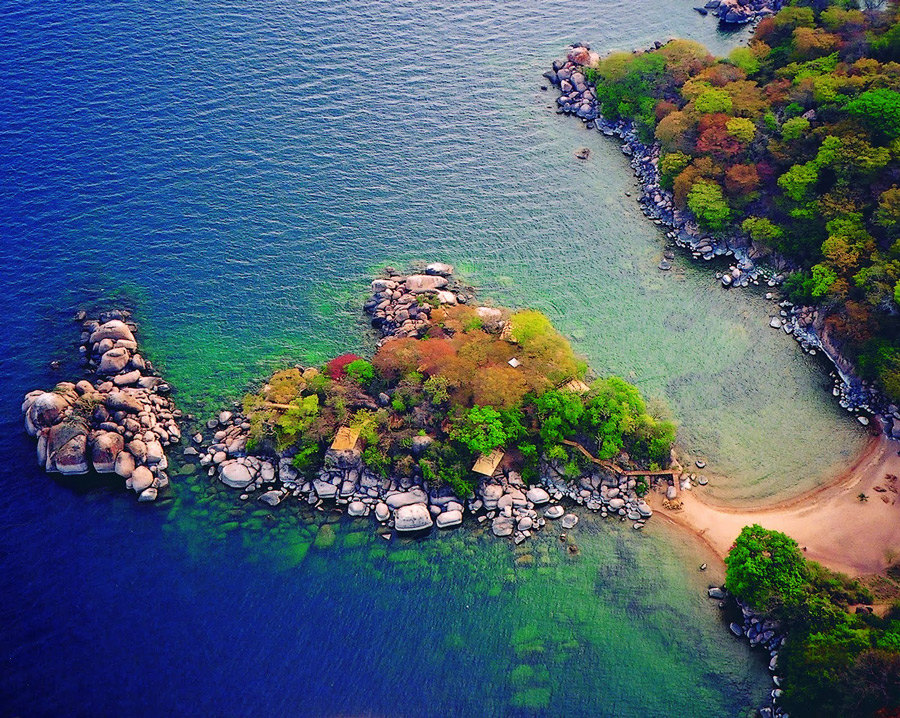
The jewel in the crown of the country’s tourist attractions is Lake Malawi, “discovered” by the missionary-explorer Dr David Livingstone just over 150 years ago. Although totally landlocked, Malawi is not denied its “inland sea”. This vast body of freshwater fringed by beaches of golden sand is not only a scenic wonderland but it provides water sport opportunities for those looking for something beyond sun, sand and swimming. Its approximate dimensions are 365 miles north to south and 52 miles broad, hence the sobriquet: "the calendar lake". The Lake, in the north, is quite extraordinarily deep: 2300 ft/700 m, plunging well below sea level. This reflects the enormity of the natural faulting of the Great Rift Valley, which is the origin of the Lake. The width of the lake’s shorelands vary from nothing to over 25 kilometres (16 miles), the edge of the Rift Valley rising steeply in places and more gently in others.

Because of its rich fish harvest, the Lake plays an important part in the economy. Fishing villages are scattered along the shore and the traditional industry and practices are an attraction to visitors. Access to the Lake is possible along much of its length but it should be noted that it is usually necessary to take a short detour off the main roads in order to reach the beach. Despite the attraction the Lake has to settlement, there are long stretches of totally uninhabited golden sand lakeshore, lapped by crystal clear waters. Kayaking, sailing, snorkelling, scuba diving and water skiing are just some of the lake activities available to visitors. Journeys by lake range from the famous motor vessel the Ilala to sailing in an ocean-going yacht. Cruises into the upper reaches of the great Shire river are also possible.

Places to Stay
Good lodges are now to be found the length of the lakeshore, with a few collections in areas of particular beauty. Between Mangochi and Monkey Bay is a long line of wonderful beaches backed by a variety of accommodation. This Mangochi Lakeshore has the Lake’s greatest concentration of lodges and hotels. Monkey Bay is a functional port town, but round the headland is Cape Maclear and the Lake Malawi National Park, a UNESCO World Heritage Site and a veritable aquarium of tropical fish. In recent years, a number of high quality lodges have been built in this area. Senga Bay is another place where there are a number of lodges & hotels, and it benefits from being the closest point on the lake to Lilongwe. The stretch between the historic Nkhotakota and the sugar estate town of Dwangwa has a smattering of lodges. Another concentration is found on the Chintheche lakeshore, which has some stunning beaches. Nkhata Bay is primarily a port town, but has grown as a centre for independent travellers. The Northern Lakeshore beyond Chitimba has fewer lodges, and Karonga, an important archeological centre, is the only town of note before reaching Tanzania. Across the lake, into Mozambiquan waters, is Likoma Island. Not only does it have some beautiful beaches, and accommodation, but also a missionary-built cathedral the size of Winchester’s. A nearby stretch of the Mozambique shoreline, Manda Wilderness, is a 120,000 hectare community reserve of unspoilt wilderness and white sand beaches.



